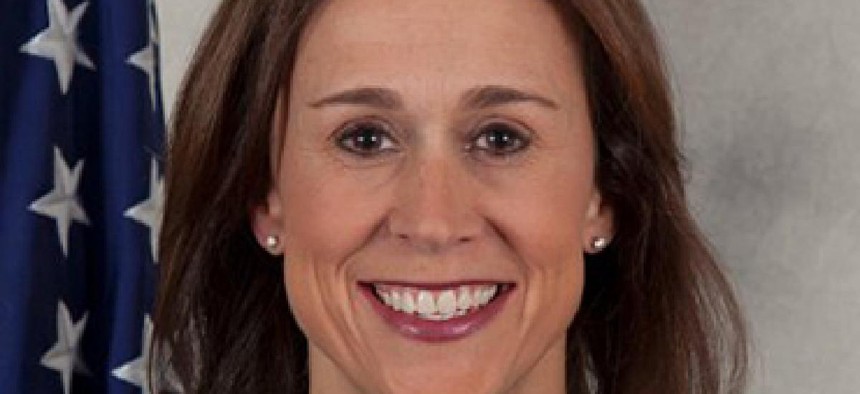Next-gen telecom contract draws unconventional interest

GSA's Mary Davie said the agency is looking for contractors beyond traditional telecommunications providers.

Mary Davie said GSA wants its next-generation telecom contract to appeal to companies other than traditional telecom providers.
Managers of the General Services Administration's emerging telecommunications contract say a variety of vendors are interested in bidding on the $50 billion vehicle, and they expect a competitive battle for it.
Mary Davie, assistant commissioner of GSA's Office of Integrated Technology Services, said her agency wants to make the cornerstone contract for the next-generation telecom acquisition strategy open to contractors other than the traditional telecom providers that support the current Networx contract.
Davie spoke on a conference call with reporters on March 3 as a follow-up to GSA's release of a draft request for proposals on Feb. 28 for the Enterprise Infrastructure Solutions (EIS) acquisition that will be the foundation of the Network Services 2020 strategy.
Potential EIS contractors can submit individual bids or partner with other companies to offer services under the complex contract, Davie added.
The agency is collecting industry comments on the draft RFP until March 30, with a final RFP expected by July. GSA plans to award the EIS contract by the end of fiscal 2016, said Amando Gavino, director of GSA's Office of Network Services Programs.
GSA officials said the EIS contract would probably be worth $50 billion over its 15-year life span.
In their wheelhouse
Industry observers have voiced concerns that the EIS contract could favor more traditional telecom carriers by requiring core services that other companies might not be able to offer as effectively. AT&T, CenturyLink, Level 3 Communications, Sprint and Verizon are the current Networx providers.
Davie and Fred Haines, EIS program manager in GSA's Office of Network Services Programs, said the structure of EIS allows many ways for nontraditional service providers to bid.
Haines said that although the EIS draft RFP requires contractors to cover four mandatory services -- virtual private networks, managed networks, regional telecommunications and Ethernet -- there are 12 other categories that fit "right into the wheelhouse of systems integrators."
He said the draft RFP was developed with significant industry and agency input, and it seeks to widen the playing field in a number of ways, including reducing geographic network coverage requirements for providers. Potential bidders won't need to have the vast network infrastructure of a traditional telecom company to participate, he added.
"Major players could bid the whole thing," while other bidders could address smaller geographical areas, he said.
Haines said "one significant systems integrator" has shown substantial interest in the contract and will probably bid. GSA officials, however, declined to speculate on how many bidders they could expect beyond the five providers of the current Networx contract.
Not a GWAC
Industry observers have also expressed concerns that given the multiple sources for federal agencies to buy telecom goods and services, including GSA's Schedules program and various governmentwide acquisition contracts (GWACs), companies might choose not to bid on a big telecom contract like EIS.
Davie said GSA has been working hard to incorporate input from agencies and industry to make EIS easy to use and attractive for federal users, especially when compared with other contracts.
"We're not building a GWAC," she said, but something that can provide more targeted management and capabilities. For instance, EIS and the NS2020 strategy seek to simplify ordering and the management of an ever-widening pool of telecom services and capabilities. Users will be able to put together specific packages of services according to their needs, she said. GSA will also manage agency buying processes, streamlining their efforts and putting GSA's pricing clout to use.
In addition, EIS makes ordering, inventory and billing more efficient by harnessing the commercial capabilities of providers rather than imposing a federally generated structure, Haines said.
GSA officials hope to capture 30 percent of the "addressable" federal telecom market with EIS, he said, adding that Networx has roughly 25 percent, with the rest "maintained by individual agencies because of security requirements." Although EIS addresses security, some agencies want to "maintain control of their facilities" and opt not to go through GSA or other agencies to maintain that control, he said.
However, Davie said some intelligence agencies notorious for keeping their telecom services close are moving to GSA's services. Specifically, the Defense Information Systems Agency is moving to Networx and has said that EIS meets its needs, she added.
And GSA is "working with [Office of the Director of National Intelligence] on where we can assist," Gavino said.
NEXT STORY: VA misused $92.5 million on software, IG says





